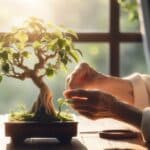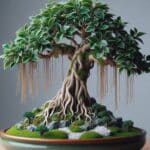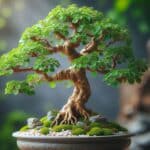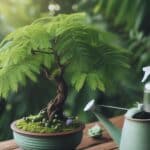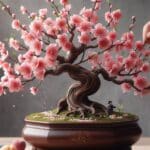Bonsai trees look stunning in a garden, but it is tempting to bring them indoors to brighten up and decorate interior spaces. These miniature trees are always interesting to look at, and they are perfect for creating a calming zen effect inside your home.
Not all bonsai trees can survive indoors. If you want to keep a tree inside, finding a suitable species and taking good care of it is essential.
Luckily, plenty of great tree species suitable for bonsaiing can grow well indoors. Let’s look closer at the 11 most common indoor bonsai tree species and learn how to care for these beautiful plants.
11 Best Bonsai Trees You Can Grow Indoors
Good indoor plants are species that can tolerate low light and humidity conditions. It is also best to select slow-growing varieties because plants with rapid growth can quickly become an issue in the smaller home interior.
There are, of course, many alterations that you can make to boost the growth and health of plants that prefer outdoor conditions. Special equipment like growing lights or humidity trays can help create a more desirable indoor environment so your tree will stay healthy.
These extras can, however, increase your overall plant maintenance. If you want to keep bonsai trees indoors without working too hard then it is best to focus on the following tree species:.
Ficus Bonsai Tree
There are over 800 species of ficus tree and many are suitable for bonsaiing. This is one of the most popular bonsai tree species because they are hardy, easy to care for, and ideal for complete beginners. Out of the many different ficus trees, the best indoor bonsai varieties include the following:
The Weeping Fig

The weeping fig (Ficus benjamina) is an evergreen tree that grows quickly. This variety produces interesting root systems and can be shaped upright or into the weeping style. This tree should be trained into bonsai form from a tender sampling because it is prone to scarring.
The Willow Leaf Ficus

The willow leaf ficus (Ficus neriifolia) has thinner foliage and produces lots of twiggy branches. This tree requires a bit more maintenance because it does produce a vigorous root system and it will need to be repotted regularly.
Ginseng Ficus
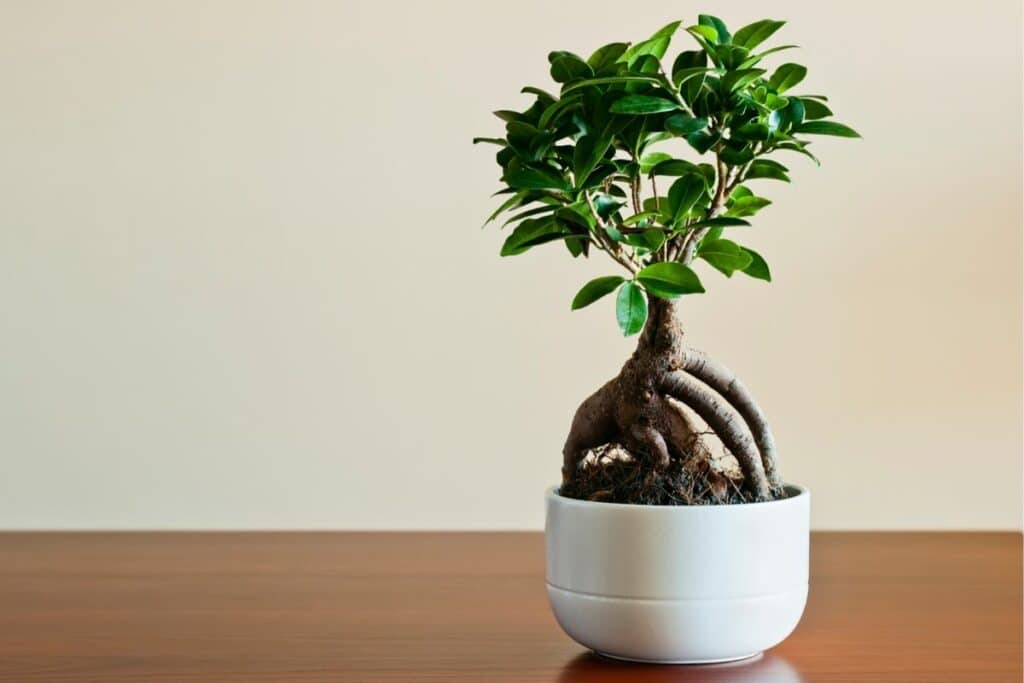
The ginseng ficus (Ficus retusa) produces a fat trunk that can make the tree look aged after a few short years.
It is one of the best indoor bonsai tree varieties because it can grow well in the shade with lots of indirect light or just some early morning sun.
This popular bonsai tree doesn’t tolerate cold climates but is evergreen and easy to maintain. Ginseng ficus bonsai trees prefer warm and moist conditions, and they will flourish if placed in a humidity tray filled with fresh water.
Chinese Elm Bonsai Tree
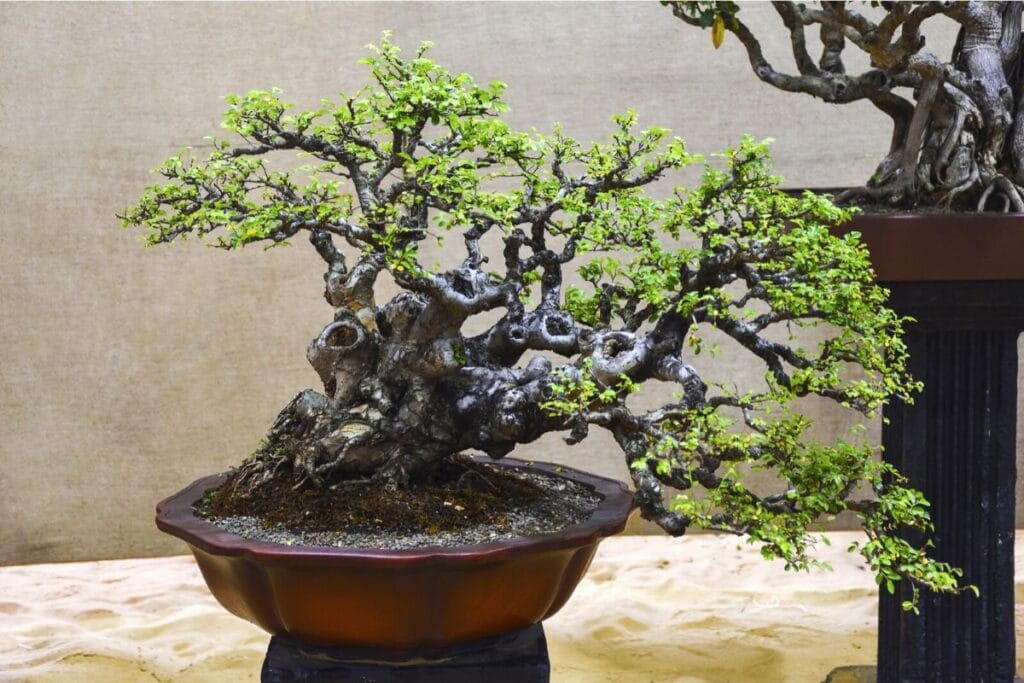
The Chinese elm tree (Ulmus parvifolia) is also ideal for bonsai beginners. Ideally, it should be grown outdoors in summer and indoors in winter. Chinese elm can be kept indoors if you place it in an east or west-facing window with lots of direct sunlight.
Bonsai growers love this plant because it has a predictable growth pattern and small leaves that are easy to keep in shape. Its woody trunk and short nodes also give the tree a more aged appearance.
This tree species tolerates over-watering and can survive dry spells. It can be grown in just about any well-drained soil as long as the roots are well-trained. These trees are easy to grow from clippings or seed and they respond well to wire training.
Fukien Tea Bonsai Tree

The Fukien tea tree (Carmona retusa or Ehretia microphylla) is great for upright or S-curved bonsai tree patterns. This tree can also add charm with its small white flowers in spring and red fruits in summer.
Fukien tea trees can be kept inside but need six hours of direct sunlight during the warmer seasons. It is usually best to position this beautiful bonsai outdoors during spring and summer and to bring it indoors for autumn and winter since it cannot tolerate cold winters.
Jade Bonsai Tree
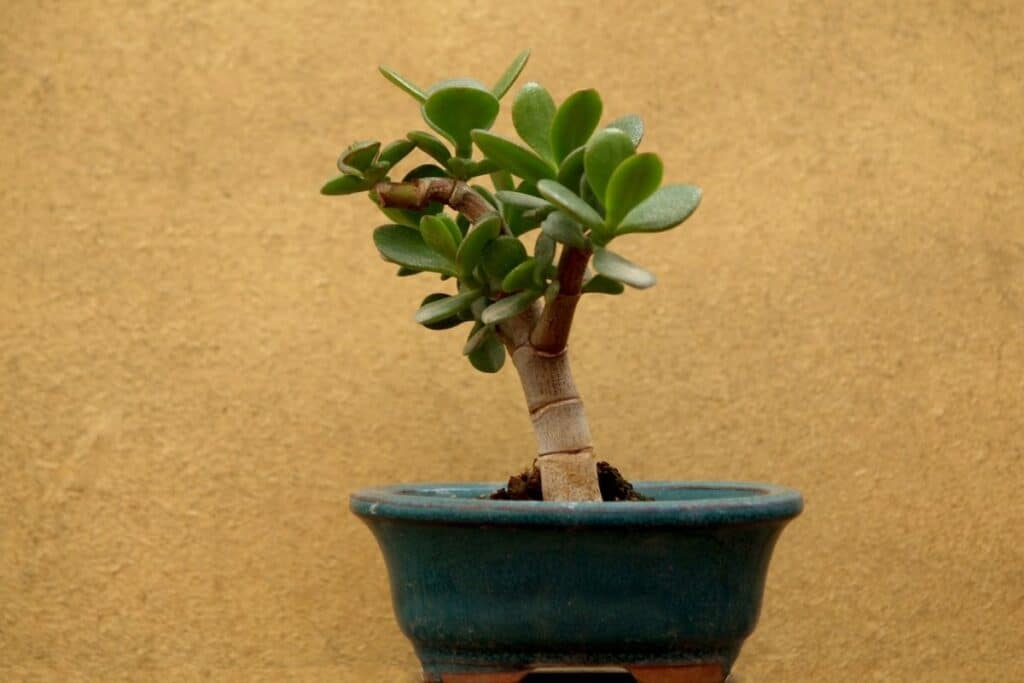
Jade bonsai (Crassula ovata) or dwarf jade (Portulacaria afar) are favorites among bonsai beginners because these plants are very easy to care for and they can survive indoors with minimal care. These evergreen plants look similar but they are different species.
The jade plant is the easiest to keep as a bonsai because, even without wiring or training, this tree naturally looks like a bonsai. It is ideal for creating larger displays because the plant’s succulent leaves are quite large.
Most people lean more towards the dwarf jade bonsai because it looks a lot like the jade plant, and is just as easy to care for, but it has more delicate features and can be more suitable for creating miniature bonsai trees.
You can keep these bonsai trees indoors in a sunny window with 6 hours of bright light per day.
Dwarf Umbrella Tree

Bonsai growers often refer to the dwarf umbrella tree (Schefflera arboricola) as the octopus tree because it has a unique leaf pattern.
This interesting plant is a great indoor bonsai because it is hardy and evergreen. Its shade-tolerant nature and ability to grow in low humidity conditions make it ideal for indoor use.
This tree species can be trained to produce all sorts of bonsai styles, and parts of the root system can be exposed to create an interesting appearance. It is common to see lots of areal roots form around the trunk.
Growers should note that this tree needs to take better to wiring and requires excessive pruning every year.
Juniper Bonsai Tree

Coniferous plants (Juniperus) can also be practical for creating bonsai trees, and many varieties, including Japanese junipers, Chinese junipers, and California junipers, can be used to create an indoor bonsai tree.
The needle-like or scale-like foliage of these shrubs or small evergreen trees adds lots of texture and gives the tree a more delicate or aged appearance. The plant is very popular as a bonsai because it is easy to care for and practical for beginners. After all, it is hardy.
Juniper bonsai can be kept indoors or outdoors. In indoor settings, the tree should be placed where it will receive lots of early morning sun.
Satsuki Azalea Bonsai Tree

Satsuki azalea (Rhododendron indicum ‘Satsuki azalea’) is a variety of Rhododendrons and is a perfect indoor bonsai tree to add more color to your spaces. This flowering plant comes in many different flower colors and forms, and some species can even produce different flower colors and patterns on the same tree.
This flowering plant is mostly used for growing outdoor bonsai trees because they prefer dappled shade. If you want to keep this bonsai tree indoors, position it in a sunny window with a bit of early morning sun and lots of indirect light throughout the day.
Beginners should avoid this type of bonsai plant because it requires a lot of care. The bonsai should be grown in organically rich soil and kept moist but not too wet, or it can develop root rot.
Money Tree Bonsai
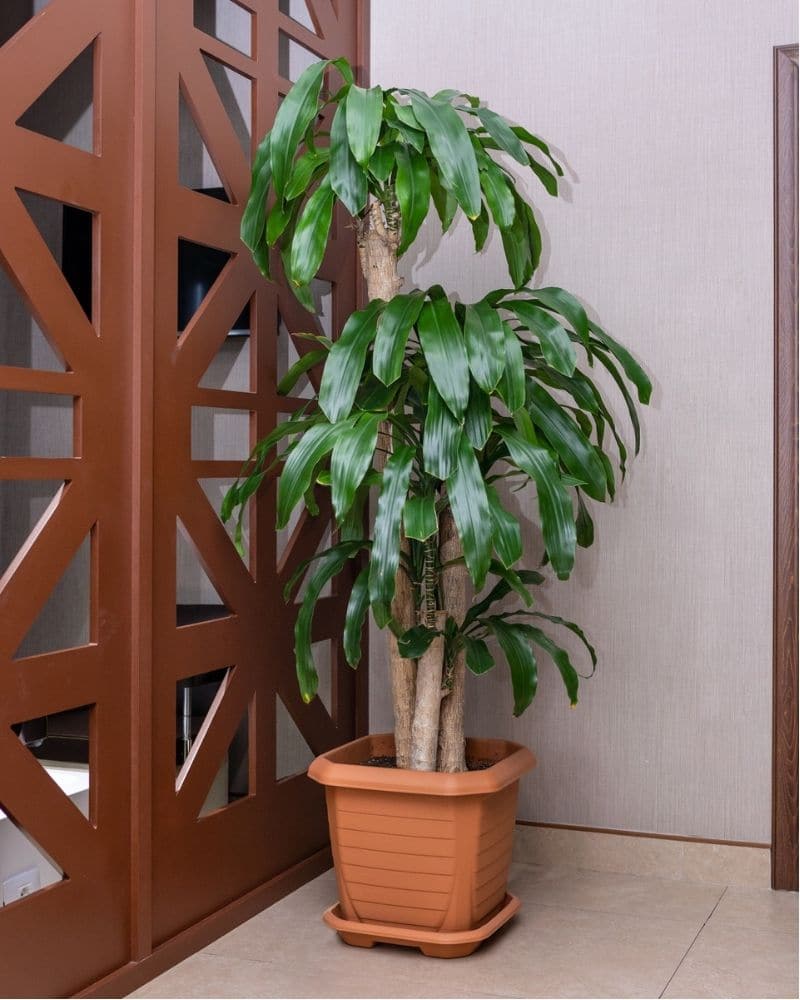
The money tree (Pachira aquatic) is considered a symbol of luck and prosperity. This plant is quite popular as a bonsai because the trunks can easily be braided to make the trees appear older and fuller and to create a more lush top-knot-style canopy. The unique foliage of this tree will add a tropical feel to your spaces.
These trees can be challenging to train and style but are easy to maintain once they are properly trained. Money tree bonsai doesn’t look like the traditional bonsai tree, but it is one of the best indoor bonsai plants because it can grow well in bright, indirect light. They can scorch in direct sunlight, which is exactly what makes them ideal for indoor use.
What is the Easiest Bonsai to Keep?
One of the very easiest bonsai trees you can keep indoors is the dwarf jade. This tree is a succulent and can survive dry periods since it stores water in its leaves. The tree is also very low maintenance since it is evergreen. The soft branches are easy to manipulate and the tree species can survive a lot of strain from pruning without dying.
The most important requirement for keeping this indoor tree alive is sunlight. The tree will need a few hours of direct sunlight per day in order to stay healthy.
How to Care for Indoor Bonsai Tree
Growing and caring for a bonsai requires quite a bit of patience and it is important to do some research on the growing requirements of the plant because some bonsai species will require more sunlight and water than others. Here is a quick look at how to take good care of your indoor bonsai tree.
Soil
Planting your indoor bonsai tree in quality potting soil is always best. The soil should drain well and be filled with nutrients because you want these trees to stay healthy despite their limited pot size. It is crucial for the soil to drain well or your tree will quickly develop root rot.
Pruning
Bonsai trees usually require lots of pruning to maintain a desirable shape. Some species, like the jade plant, naturally look like a bonsai tree without much pruning, but most other species must be regularly pruned and trimmed to maintain their miniature form.
If you are a beginner, you can start by pinching back some of the new growth. Avoid trimming off all the new growth or the tree might need help to sustain itself.
Repotting and Transplanting
Bonsai trees are usually planted in small containers, which helps stunt the growth so it won’t become too tall. Repotting is usually done when the root system fills out the pot. This is usually done every two to three years.
Repotting the plant will also give your tree fresh, nutrient-rich soil to stay healthy.
Water
The watering requirements of indoor bonsai trees can vary quite a bit. Succulent varieties like jade plants or ficus tend to be more drought tolerant than species like Satsuki azalea. It is best to research your plant’s exact watering needs to avoid over or under-watering it.
Sunlight
Indoor plants also need some sunshine. Species like money trees, satsuki azalea, and dwarf umbrella trees don’t need much direct sunlight at all and can grow well in any indirect light. Succulent varieties and species like juniper bonsai, ficus, and chinese elm will need to be strategically placed to receive some direct sunlight.
Temperature and Humidity
Most of the trees we mentioned in our guide can tolerate low humidity levels that are usually found in indoor spaces. Species that are more humid-dependent can be placed in a bathroom or can be kept in a humidity tray to keep them healthy and hydrated.
Fertilizer
Bonsai trees only have access to a few nutrients. They need to be fertilized regularly to keep them healthy. Applying a balanced liquid fertilizer to your bonsai trees is usually best. Most gardeners recommend diluting the strength of these fertilizers so the plant’s roots won’t be damaged.
Pests and Diseases
Pests and diseases are usually limited to indoor plants because your home will provide good sheltering. The biggest threat for indoor plants is usually root rot and fungal diseases since these plants don’t receive much direct sunlight.
Final Thoughts
Plants like ficus trees, Chinese elm, Fukien tea, jade plants, umbrella trees, junipers, money trees, and Satsuki azalea are all ideal for indoor use and can be great for a bonsai beginner because they are so easy to care for. Even these common indoor bonsais do, however, need a little more care and maintenance than your average houseplant.
We hope that you enjoyed this guide. We wish you all the best when you go tree hunting for the best indoor bonsai.
See more: Indoor Plant Leaves Turning Yellow? Causes and Fixes


